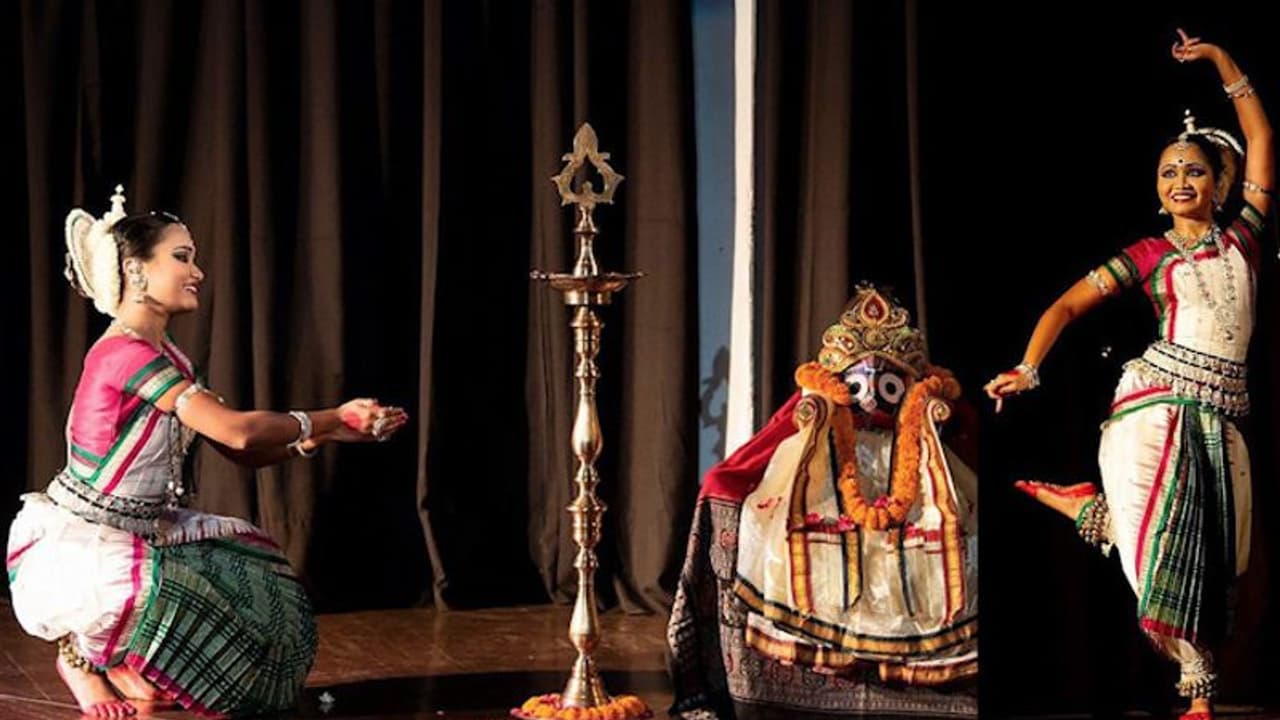The digital route to reach out to art lovers might be a hard task to take up, but Prachi Hota has seamlessly adapted to it and has kept the passion for Indian classical dance form alive.
Bengaluru: The coronavirus pandemic has posed difficulties to everyone in the world, and undoubtedly, arts and humanities help us sail through it all.

Adapting to new challenges posed by the coronavirus is Prachi Hota, a young Odissi exponent, who has been giving live dance performances on social media platforms.
At a young age of 23, this dancer has carved a niche for herself in the classical Odissi dance scene in the country. As a trained dancer for 20 years, Prachi Hota has been a professional artist for the past eleven years. She is also trained in Hindustani music and Sitar and is currently pursuing her Master’s in filmmaking at the London Film School, United Kingdom.
A person with diverse interests, she is also associated with Project Anjuman that conducts workshops in government schools across Delhi. She also organises seminars about dance titled Samanubhāsanā - Conversations On Indian Dance.
In an interview with Asianet Newsable, Odissi dancer Prachi Hota shared her thoughts on how COVID-19 changed her life.
1. What made you choose a classical dance form like Odissi when there are many other dance forms in the country?
Ans) I was three years old when I started learning Odissi, so I can’t quite tell you why I chose it. It was a very organic process. My parents introduced me to various activities and would let me sit in those classes. Somehow, I just took to Odissi.
Why I continue to learn and practice it today is because it centres me psychologically. I am the best version of me when I am dancing, because I am completely at peace with myself. In addition to this, it keeps me fit. 60 to 90 minutes of rigorous practice is a great full body workout. Moreover, it has taught me the importance of discipline and perseverance. Most importantly, it has exposed me to the joys of having something to be deeply passionate about. I can say with complete certainty that my life is a full and deeply satisfying one because of Odissi.
2. How did the coronavirus pandemic change your life?
Ans) The pandemic has changed my life in the same way it has changed just about everyone’s life. The biggest implication of the pandemic in my life is that I can no longer perform in auditoriums. I have always enjoyed performing. It helps me connect with people in ways that one can’t otherwise. Art, within Indic philosophy, is meant to be a shared experience. It is supposed to be a collective path to transcendence for everybody who engages in the performance – the artist and the audience. In an auditorium, this manifests as palpable energy that results in a conversation between the artist and their audience, both affecting each other. No words need to be exchanged, for this back and forth to happen. This makes every performance unique. Since the pandemic, performances that are streamed live online have become the norm. On such platforms, this conversation between the artist and audience is muted.
3. What good did the COVID-19 lockdown bring about?
Ans) The good thing about the situation, however, is that because everything is online, performances have become accessible to people who might not otherwise have had the time to make it to the auditorium. The space for discourse has also moved online, so art historians, critics, scholars and artists themselves are now engaging with each other on dance as an academic endeavour. Such engagement among practitioners is necessary if the art form is to grow and having all of this online means that people across the globe engage with each other. Essentially, the space for discourse has expanded in the pandemic.
4. What would you suggest to youths who are interested in taking up dancing?
Ans) I have a lot to learn, so I am hardly in a position to give advice. There is advice that I was given, which has held me in good stead, so I’d like to pass that on. Practice your art consciously. Practice doesn’t make perfect. Perfect practice makes perfect. You could practice for hours on end, every single day, but unless you do it with complete involvement, with the clear objective of getting better each day, it is not going to make a difference. Riyaaz must be a conscious process.
5. What do you have to take care of when you want to make dance a profession?
Ans) This is a very difficult question to answer. Every dancer has their own journey and different things work for different people. One must remember, however, that this is a difficult profession. The fact that we have a strong narrative tradition in most Indian classical dances means that you are constantly making yourself vulnerable and digging into the deepest recesses of your mind to understand the characters that you are portraying, so dance takes a lot of tenacity. One must focus on learning and becoming the best artist one can be, rather than just performing. Patience is necessary. It takes more than a lifetime to even scratch the surface of Indian classical art forms, let alone mastering them. Complete involvement, focus and discipline are essential.
More practical requirements are of course that one needs to be fit. You have to constantly watch your stamina, which means that you have to be careful of what you eat and listen to your body. This will also naturally take care of your mental health.
